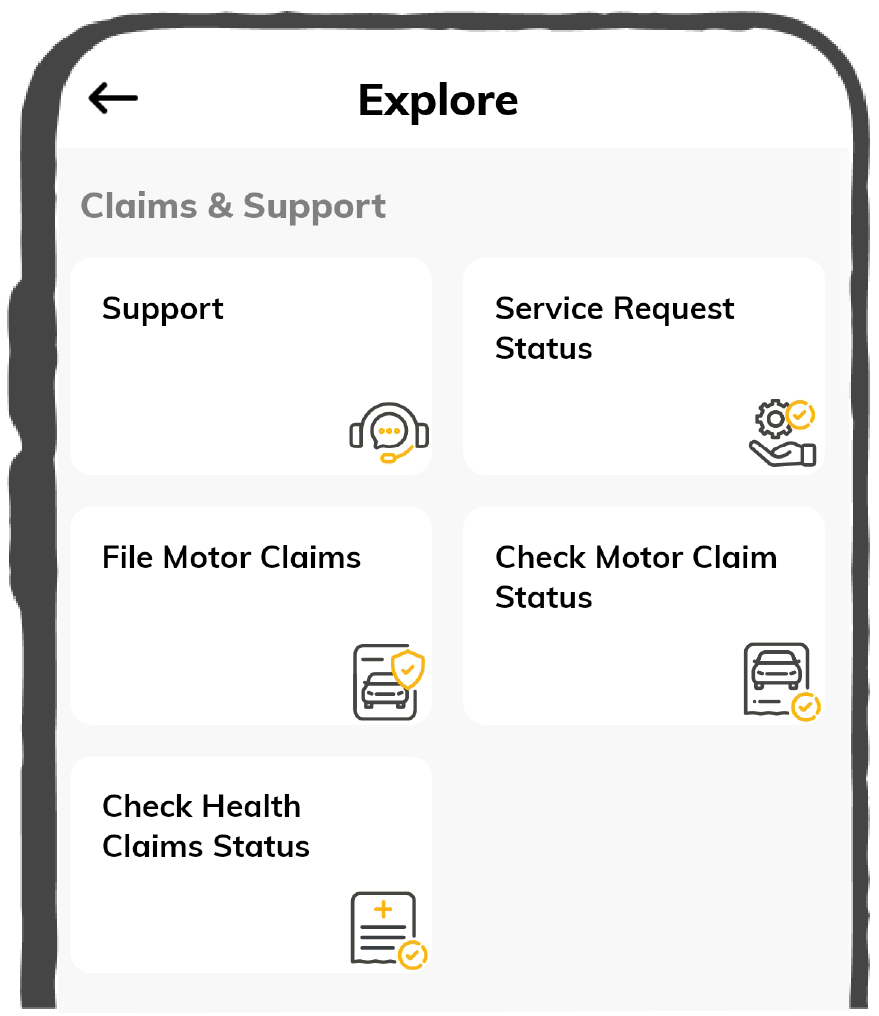Buy Health Insurance, Up to 20% Discount
9000+
Cashless Hospitals
2.5 Crore+
Lives Insured
4.5 Lacs+
Claims Settled
I agree to the Terms & Conditions
Get Exclusive Porting Benefits

Buy Health Insurance, Up to 20% Discount
Port Existing Policy
9000+
Cashless Hospitals
2.5 Crore+
Lives Insured
4.5 Lacs+
Claims Settled
0% GST on Your Health Insurance in India
The Goods and Services Tax (GST) plays a direct role in how much you pay for your health insurance policy premiums. Earlier, health insurance premiums in India were subject to a GST of 18%. However, with the recent decision of the GST Council, health insurance has been granted a full exemption (0% GST) effective from September 22, 2025.
Since any revision in GST rates directly influences the final premium amount, it’s important to understand what this update means. In this article, we break down how GST 2025 affects health insurance premiums, the benefits for policyholders, and its broader impact on the health insurance market in India.
What is GST on Health Insurance?
Health insurance premiums are no longer subject to GST under the new reform. Previously, policyholders paid tax on top of their premiums, which added to the cost of coverage. The removal of the GST should allow health insurance to become cheaper and more accessible to individuals and families.
This change is expected to encourage more people to purchase and renew their policy, allowing for more financial protection covering skyrocketing medical expenses without the added burden of taxation.
What is the Health Insurance HSN Code Under GST?
The HSN (Harmonised System of Nomenclature) code is a standardised international system used in India under GST to classify goods and services and calculate taxes. Each HSN code is 6 to 8 digits long and provides information about the specific categories of products and services. Health insurance, for example, is classified under HSN code 997133, which includes health insurance services.
However, due to the new reform removing GST on health insurance, this code is now only more of a classification code than an actual determination of tax liability, and it is meant to provide transparency and consistency in service classification.
The Old Scenario: GST on Health Insurance Premiums
Before the recent reform, health insurance premiums in India included an additional 18% GST (Goods and Services Tax). These taxes applied to the base premium amount, which increased the amount policyholders paid for health insurance coverage. Here is how the old GST structure worked on premiums:
Central Goods and Services Tax (CGST)
The central government imposed CGST on intrastate transactions, in which the policy was purchased or renewed in the same state or union territory (for the CGST, an intrastate transaction is when a premium is paid for a policy that is purchased or renewed in the same state or union territory). The CGST tax was charged at 9% of the premium.
State Goods and Services Tax (SGST)
In addition to CGST, state governments imposed SGST on the same intrastate transactions at 9% of the premium. Between CGST and SGST, the combined GST on policies purchased in that state was 18%.
Integrated Goods and Services Tax (IGST)
For transactions between states, where a policy was purchased across jurisdictions, the federal government imposed IGST instead. This combined tax was a flat fee of 18% instead of the split of CGST and SGST.
For example, if you purchase a health policy within your state with a premium of ₹20,000, you will pay 9% CGST + 9% SGST (totalling 18%), coming to ₹3,600 GST. If you purchase from another state, the policy would attract IGST at 18% which also totals ₹3,600.
This structure made health insurance too expensive and added a financial strain, especially for families and senior citizens. It discouraged people from buying or renewing coverage, even though health insurance was intended to provide economic relief amid a medical crisis.
The New Scenario: No GST on Health Insurance
The removal of GST directly lowers the cost of health insurance premiums. Earlier, policyholders had to pay an additional 18% GST on their premiums. With this reform, that extra burden is gone, leading to significant savings. Let's understand this with the help of an example.
Kisan, a 27-year-old software engineer living in Bangalore, purchased a health insurance policy to secure his future medical needs. After researching various options, he chose a plan with a sum insured of ₹10 lakhs per year.
Let's break down how GST applies to his purchase:
Note: The values presented in this table are for illustrative purposes only. Actual premium amounts, discounts, and GST calculations may vary depending on the insurance provider, policy terms, location, and applicable regulations.
Benefits of Removing GST on Health Insurance
The withdrawal of GST from health insurance premiums has provided policyholders with immediate relief. It lowers the cost of policies and promotes increased take-up of financial protection. The summary of key benefits is as follows:
- Reduced Premiums for Individuals and Families: Policyholders no longer have to pay GST on their premiums, so there is a reduction in the base annual cost to provide health insurance, especially for middle-class families.
- More Affordability for Seniors: Senior citizens usually pay higher premiums than their counterparts; this is often because some of the risks of medical cover will change due to their age. The removal of GST will provide relief here, making it easier for those in their senior years to access health coverage.
- Encourages More People to Purchase Health Insurance: In the past, many people were put off purchasing health insurance because of higher premiums. With lower costs, more people will likely purchase health insurance policies, enhancing overall health insurance penetration in India.
- Increases Policy Renewals and Longer Coverage: Customers tend to renew their policies year after year when they are offered cheaper premiums. This ensures that they continue to be protected, which means customers are less likely to allow their policies to lapse.
- Boost to Financial Planning: The GST savings could be applied to better coverage, greater sum insured, or other health-related financial planning needs, to enhance overall economic security.
The Impact of GST Removal on Health Insurance Market in India
The removal of GST on health insurance hasn't just eased customers' financial stress; it has shaken up the health insurance market. It is expected to provide continued development and maintain calmness from a medical insurance standpoint in India:
- Increased Insurance Penetration: With lower costs, more individuals will likely acquire health insurance. This will increase aggregate insurance penetration, especially for middle-class families and young buyers who previously viewed premium amounts as too expensive.
- Increase in Policy Renewals: A decreased premium encourages existing customers to renew their policies regularly. This enables insurers to develop long-term relationships with policyholders and provides stability in revenue.
- Growing Demand for Broader Plans: Retailers can now buy policies for broader coverage and/or higher sum insured, as they can now utilise the savings from the GST amount to move up a plan. This is favourable for both customers and insurers.
- Greater Access for Senior Citizens: Insurers typically charge higher premiums for the older age groups, so without the GST, senior citizen policies become more economical. We expect to stimulate demand from this segment.
- Positive Push to the Insurance Industry: With many purchasers and renewals of policies, insurance companies can expect continued growth. This reform aligns with the government's efforts to expand access to healthcare through private insurance.
Why GST Removal on Health Insurance is a Game-Changer for Customers?
The removal of GST on health insurance isn't just about lowering premiums. It changes how consumers view health coverage, providing a better customer experience and delivering coverage that will be more practical. Here are the top reasons why GST removal on health insurance is beneficial for customers:
- More Affordable Entry Point for First-Time Buyers: Previously, the upfront premium cost with GST caused hesitation for many first-time buyers. Health insurance now feels more attainable for new customers with the lower upfront costs.
- Greater Value for Money: Without GST, every rupee paid toward the premium goes to the insurance policy. Customers now feel they have received more value for their payment.
- Better Access to Good Healthcare: With affordable premiums, more families can purchase policies that cover hospitalisation, treatment and emergencies. This will provide financial insurance from any hidden tax charges.
- Building Better Trust in the Insurance System: By removing the GST, the government indicates that health insurance is an essential service, which should not be taxed. Reduced confusion and distrust will lead people to view insurance as a necessary safety issue rather than a commodity.
- Better Financial Stability over Time: Lower costs equate to more customers staying engaged year after year, allowing customers the peace of mind of consistent protection and greater long-term planning for their medical needs.



















